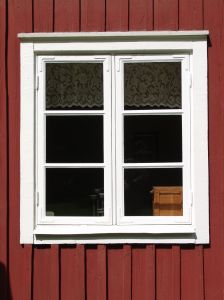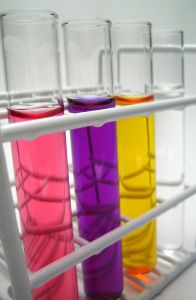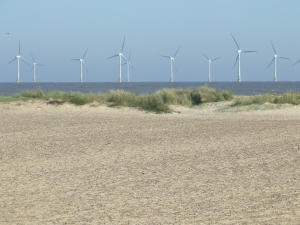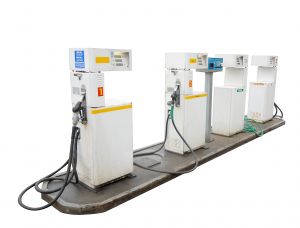Hello again,
Its back to business………..
Apart from being a vacation month for many, August was eventful in more ways than one.
AGAINST ALL ODDS
It was mayhem of sorts for the stock markets and geopolitical tensions did precious little to allay fears of an exacerbation of the economy blues. The timing could not have more inopportune; especially when the “feel good” factor was just playing upon us with the eurozone reportedly coming out of an 18-month recession, the U.S. beating forecasts to register a 2.5% growth in GDP in Q2 and Chinese manufacturing besting expectations with a 51.0 Purchasing Managers’ Index (PMI) in August – the highest level since April 2012.
Signs of prosperity in the face of adversity – a classic example of diversity ?
SOARING IN CONFIDENCE
The aerospace (and composites) sector had a lot to cheer about in the last week of August. Boeing announced newer versions of the 787 Dreamliner in the offing. Ethiopian airlines [ABC News] that reported a record profit for the 12-month period ending June 2013, attributed it partly to savings in fuel costs arising out of the fuel-efficient 787 design…composites no doubt playing a significant role towards this cause.
Composites replacing aluminum has been a key feature of the new generation Airbus 350 (and the 787 Dreamliner). The latest innovation has been the development of the complete inner core door frame in CFRP using RTM technique, for the Airbus 350. The process enables the highly stressable CFRP composite to be produced with a comparatively high fiber volume content with good impact properties, while reducing weight at the same time. Manufacturing is via an injection process using the proven modular system found in Wickert downward presses. The hydraulic press system was designed to be absolutely oil-tight by completely enclosing the press area and the entire press technology peripheral system, including the hydraulic and electrical systems, since the carbon parts could not be risked to exposure to even a hint of oil mist. The control and process visualization integrates the injector, heating/cooling system and press shuttle. The cycle time for fabrication is six hours per airplane door – which is faster than fabricating with aluminum. The product will be on display at Composites Europe 2013.
Proof of the pudding ? Aerospace grade carbon fiber producers and CFRP processors will probably be laughing all the way to the bank for the next few years with the projected (increased) roll out by both Airbus and Boeing of the A350 and 787 versions respectively.
REVVING UP
Currently, the North American auto sector is on a roll with a surge in vehicle production – in fact, the industry is being termed as being at “hyper-utilization ” [Plastics News]. Forecasters predict production levels to bounce back to between 15.5 million and 16 million vehicles this year, which is expected to climb above 16 million in the next few years. Global car sales advanced 4% in H1 2013 and is well poised to post further gains this year, aided to some extent by reduced headwinds emanating from Western Europe [Scotia Bank].
The UK is the strongest auto market in Europe with first-half 2013 sales posting a double digit increase. Per latest data from PwC Autofacts, New York, the developing Asia-Pacific region will account for 62% of overall growth in global automobile production through 2017. North America comes a distant second at 13.4%, with the European Union accounting for 11.7%, South America 6.7% and Eastern Europe 6.3% [Plastics Today].
Thermoplastic composites continue to play a major role when it comes to lightweighting in the automotive sector. BASF‘s new innovative approach involves use of laminates based on woven glass fabrics and unidirectional (UD) tapes that are fully impregnated with polyamide (PA) or polyethylene terephthalate (PBT) [Plastics Today]. Overmolding materials also based on PA and PBT have been specifically developed for use with the laminates. The tape-laminate combination enables injection molding of complex parts that have very high mechanical reinforcement by use of continuous fibers at precisely defined locations, whilst simultaneously incorporating specific functions as the result of overmolding. For parts with very high stiffness, the overmolding compound can be loaded with up to 60% glass fiber reinforcement. For crash loaded applications requiring high impact strength and optimized for high energy absorption, specific tape-laminate configurations are available.
THE SUSTAINABILITY WATCHWORD
Innovation drives change. The BMW i3 electric car launched last month has its passenger compartment constructed of CFRP over an aluminum chassis. Interestingly, around 25% of the plastic used in the interior comes from recycled material and renewable sources. In the course of its development, the company claims to have developed the first recycling concept of its kind worldwide for CFRP components. Little wonder that the car has been described as a “revolutionary step towards sustainable mobility” [European Plastics].
Can there be a better advertisement for commitment to sustainability whilst simultaneously delivering performance ?
Chemical recycling of GFRP composites could soon be a commercial reality. A hydrolysis process has been applied to degrade an unsaturated polyester resin based on dicyclopentadiene (DCPD) cross-linked with styrene monomer in the matrix of a composite material reinforced with long glass fibers. Sub-critical conditions of water (200C <temperature <374C and pressure <221 bar) were chosen based on relevant chemistry for simple esters. A washing of the fibers is necessary and an important step in the process. Experiments measured the effect of process parameters on the efficiency of hydrolysis, on the quality of recovered fibers and on the nature of the recovered organic products. Identification of the recovered organic products indicate monomers of the resin are obtained and that secondary reactions also occur during the hydrolysis process [Sciencia].
A new dimension to GFRP recycling that is different from the conventional pyrolysis technique ?
FIBERGLASS LINEALS – RESURGENCE ?
Pultruded fiberglass profiles as the supporting material for window and door assemblies have been around awhile. The American Architectural Manufacturers Association (AAMA) has long been an advocacy agency for the fenestration industry. The major advantages of fiberglass as a fenestration material are strength and stability – essentially strength means window frames can be slimmer, letting in more daylight. The slim look also mimics originally designed windows [Plastics News]. Stability is important as the more a material expands and contracts, the more the sealants will crack and leak. Pultruded fiberglass windows and doors combine the desirable properties of both vinyl and aluminum. The structural strength approaches aluminum and it can take dark colors like metal. The thermal properties are close to vinyl and co-efficient of expansion is equal to that of glass which is a boon to structural integrity. According to a recent study by AAMA, fiberglass windows in the U.S. have gained traction – garnering a 3.2% market share, up from 2% earlier.
Moral of the story ? Persevere relentlessly even in established applications to successfully increase market share.
CHEMISTRY→PRODUCTIVITY
Further updates on the novel Epoxy Structural Reaction Injection Molding (ESTRIM) technology that I had briefly touched upon in my April post earlier this year…… Cannon‘s ESTRIM technology is a fast-cycle molding system for composite parts made using carbon fiber reinforced epoxy resin that reduces demolding time of a finished composite part from 20-30 minutes of a standard RTM process to just 3 minutes ! This impacts productivity significantly in a positive way, drastically shortening the Return on Investment (ROI) in machinery. The quality of the molded piece is reportedly on par with the traditional process, while the high-pressure technology used to meter and inject the liquid reactive formulation allows for complete elimination of cleaning solvents from the production cycle [Plastics Today]. This provides significant benefits to workers’ health, working place atmosphere and process economies.
OFFSHORE WIND – UNSTOPPABLE ?
In July, the London Array wind power project in the United Kingdom became the world’s largest offshore wind farm with a fleet of 175 wind turbines and a nameplate capacity of 630MW – enough energy to power nearly half a million homes and reduce harmful CO2 emissions by more than 900,000 tonnes annually. The UK currently boasts of more than 3.6GW of offshore wind power capacity which is forecast to more than quintuple in size by 2020 [Forbes]. With over 5GW of global installed capacity representing about 2% of total installed wind power capacity [GWEC], and with a whopping 80GW to be installed by 2020, the offshore wind market is picking up speed [Renewable Energy World]. With longer blades and carbon fiber being the preferred material of choice, producers have their task cut out for the next 3-5 years. Wind energy accounted for 43% of new electric additions last year adding more than 13GW of new wind power capacity to the U.S. grid in 2012. Wind energy now has the capacity to power all homes in the states of California and Washington. GWEC‘s latest report predicts a 11% drop in 2013 to just under 40GW followed by a sharp recovery in 2014 to slightly exceed 2012 market and average just over 11% annual market growth from 2014-2017.
Composites should enjoy a good run in this sector for the next few years barring unforeseen roadblocks.
A new grade of polyetheretherketone (PEEK) advanced engineering plastic has secured qualification from Airbus. The high-flow, easy-processing high modulus material can deliver an equivalent strength and stiffness at up to 70% lighter weight compared to traditional aerospace metals such as stainless steel, titanium and aluminum. The high modulus polymer provides up to 100 times longer fatigue life and up to 20% higher specific strength and stiffness when compared to aluminum under identical conditions [Plastics Today]. Considering the fact that removing 100lbs (45kg) can result in almost $10,000 in annual fuel cost savings per long-range plane, the potential to improving fuel efficiency is tremendous [Victrex].
A decade ago, plastics contributing to fuel efficiency in airplanes would probably have been scoffed at….not anymore though.
“INTELLIGENT” COMPOSITES
It is now technologically possible to embed radio frequencey identification (RFID) tags with ultra-thin antennas inside components made of CFRP composites such as aircraft wings – a technique that can also be adaptable to composite structural health monitoring [Design News]. CFRP composites can be conductive, and embedding RFID or other wireless chips can damp signals at commonly used frequencies such as LF, HF, UHF. Further, composite manufacturing is generally carried out at temperatures and pressures that might crush the chips, though the transponders are resistant to mechanical stress. The three frequencies work well with glass fibers – but carbon fibers interfere with the chips’ signal transmission, especially at UHF higher than 868MHz. The problem was circumvented by designing transponders that can withstand typical manufacturing pressures of 10 bar and temperatures as high as 180C and thus incorporating into aircraft components. The transponders measure only a few square millimeters and the antenna is thin enough to be embedded in composites while being protected by a thin layer of fibers [Fraunhofer].
Is this the path to making intelligent CFRP composites ?
SHIFTING THE BALANCE ?
The U.S. is set to become a net energy exporter in the next few years thanks to the success in fracking (shooting steam and chemicals into shale rock formations to unlock natural gas) that is re-wiring geopolitics and the world of energy [ALJAZEERA]. The U.S. is now 100% independent in natural gas and, with increase in production of 15-20% per year, North America will be independent in oil. Per EIA‘s latest report, US crude oil production hit 7.5million barrels per day in July, the highest level in more than 20 years – by October, monthly crude oil production will exceed crude oil imports. Predictions are that the U.S. is set to overtake Saudi Arabia and Russia to become the world’ biggest oil producer by 2017. In my July post, I had mentioned the reservoir of “untapped energy” of approximately 37 trillion cubic feet of shale gas beneath 11 counties in the UK – the fact that the country is embarking upon fracking augurs well for lowering energy costs [Plastics & Rubber Weekly].
There is no doubt that the PE/PP market dynamics is about to witness a sea change in the near future. Ditto its impact on automotive applications, which is bound to be for the better.
UNTHINKABLE REALITY
Imagine a future where Americans can drive coast-to-coast on a fuel made in America. The fuel, natural gas, is clean, affordable and fueling an economic competitive advantage that’s the envy of the whole world [The Motley Fool]. Clean Energy Fuels expects to have 150 natural gas fueling stations by the year end as part of its plan to build America’s Natural Gas Highway. These stations would refuel a truck in the same amount of time as conventional gasoline. The fact that more bus fleets will be powered by natural gas (due to its sheer abundance at competitive price) has resulted in a spurt in demand for CNG cylinders made of CFRP/GFRP in North America.
A quantum leap of faith ?
TEQUILA TIME !
Mexico is beginning to beat China as a manufacturing base for many companies despite its higher crime rate, per new report from the Boston Consulting Group. Mexico’s gain is a plus for the U.S. as Mexican factories use four times as many American-made components as Chinese factories [Bloomberg Businessweek]. The other key advantages are: manufacturing wages, after factoring Mexico’s superior worker productivity are expected to be 30% lower than that of China by 2015; Mexico has more free-trade agreements (44 countries) than any other country; significant advantages in energy costs with natural gas prices being tied with those of the U.S. (China pays more than 50-170% for industrial natural gas); industry clusters, especially in auto and appliances which are growing (89 of the world’s top 100 auto parts makers have production in the country).
Re-writing the rules for manufacturing hubs ?
Scientists and engineers keep plugging away towards technological advances in spite of geopolitical tensions. It is as if they are insulated from external events. The well known cliche that technology brooks no barriers cannot be validated more vividly than the current global environment. Advancements in troubled times pave the way for rapid marketing of technologies when normalcy returns, thereby reducing the concept-to-commercialization timeframes.
It is during such times that we speak and think of “what goes down must come up” and “hitting the bottom of the U” philosophical concepts.
Till the next post,
Cheers,
Email: SS@essjaycomposites.com
Twitter: @essjaycomposite
Website: www.essjaycomposites.com











You must be logged in to post a comment.